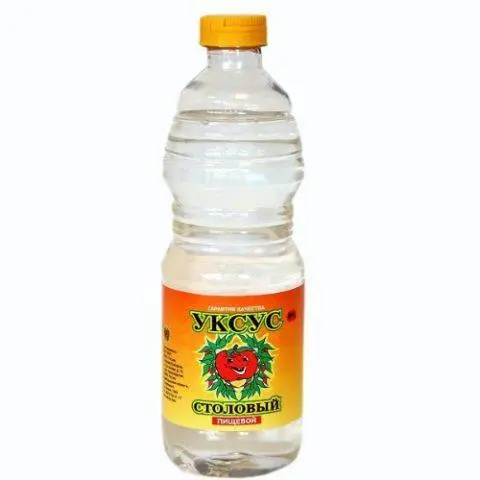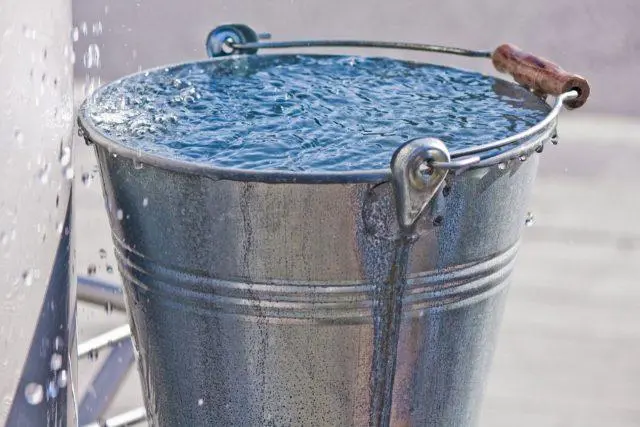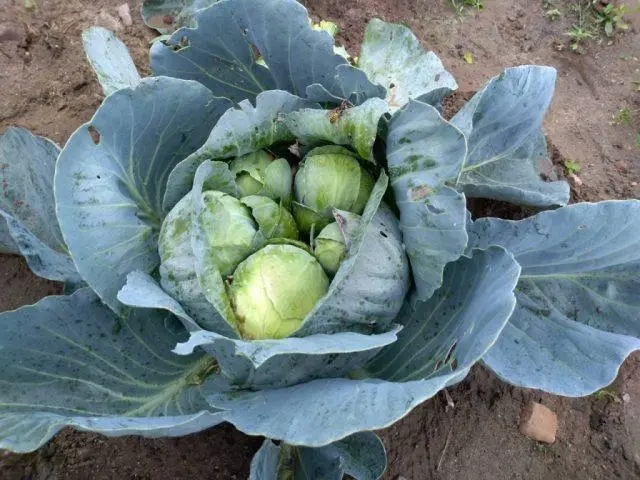Contents
Processing cabbage with vinegar is effective both at the beginning of the season and in the second half of summer. Vinegar is used as an alternative to chemicals. It is safe for plants and humans. The drug is affordable and gives results after the first treatment.
Is it possible to treat cabbage with vinegar from pests
Vinegar is often used in the practice of gardeners for the treatment and prevention of various pests. It is effective even before the start of a strong invasion. If one or more sprays are carried out at the first sight of aphids and other insects, the chances of their spread will be markedly reduced.
The drug is relatively safe, very affordable, so it is very popular. It is used to destroy such pests:
- aphid;
- cruciferous flea;
- slippery;
- cabbage leaf beetle;
- caterpillars;
- cabbage fly and others.
You can use the drug to treat cabbage and other insects. Vinegar is especially effective in alternation with other folk remedies, for example, an infusion of garlic cloves or a decoction of onion peel. If there are too many insects, they are treated with insecticides.
Pros and cons of application
Watering cabbage with vinegar from pests provides quite a few benefits:
- it is an affordable tool that can be found in any home;
- effective against a number of pests, including aphids, slugs, fleas;
- gives very fast results;
- safe for plants;
- there are no waiting periods – you can harvest cabbage almost immediately after processing;
- excellent solubility.
But this method also has disadvantages:
- spraying is not effective over large areas, therefore, the agent is not used in farming practice;
- if there are too many pests, the treatment will also not work;
- Vinegar is relatively dangerous when it comes into contact with the skin, mucous membranes of the eyes.
Therefore, it is recommended to alternate vinegar with other folk remedies, as well as insecticides from aphids and other pests.
Which vinegar is better to choose
So, spray the cabbage with vinegar from pests. First you need to decide which drug is best suited. Experienced summer residents recommend taking ordinary table vinegar with a concentration of 9%. If taken in lower concentrations (for example, 5-6%), the agent must be diluted in other proportions, adding 1,5-2 times less water.

For the processing of cabbage, ordinary 9% vinegar is used.
The use of essence 70% is not recommended. It will burn the leaves, shoots, and other above-ground parts of the cabbage. In addition, such a concentrated solution during processing can damage the soil. Even if you dilute it with water, you can burn your hands and the mucous membrane of the nasopharynx.
It is not worth using apple, especially wine, rice, balsamic and other types of food vinegar. They have a specific smell, contain additional components. Therefore, for processing cabbage, it is better to choose ordinary food vinegar, which can be bought at any store.
Terms and frequency of processing
Cabbage processing is usually carried out in spring and summer. There are no clear deadlines – it all depends on when the pests appear:
- aphids become active in June, the peak of the invasion occurs in July;
- slugs and snails appear after the May holidays;
- cabbage is active in the second half of summer until the end of August;
- butterflies (including moths, scoops) appear from late May to mid-June;
- fleas are already visible in spring, when the daytime temperature rises above +15 °.
Processing of cabbage should be carried out already at the first appearance of pests. The sooner you start, the more likely you are to stop the invasion. You need to spray 3-4 times a season until the insects are completely destroyed. The minimum interval should be 3-4 days.
The tool is used both for the destruction and for the prevention of the appearance of pests. Already in May, plantings are recommended to be carefully examined and, if necessary, sprayed. If the cabbage is of early varieties, it is impossible to use chemicals because of the long waiting times. In these cases, vinegar and other folk remedies are indispensable.
Preparation of working solution
Before you start spraying or watering cabbage with vinegar, you need to prepare a solution in proportion. The sequence of actions is as follows:
- Measure out 200 ml of vinegar (1 standard glass).2
- Dilute in a small amount of water.
- To stir thoroughly.
- Add water to the total volume, for example, a standard bucket of 10 liters.
- Mix again.
- Pour into a spray bottle and start processing.
If there is no vinegar at hand, and there is only an essence of 70%, then it is taken in the amount of 2 tablespoons per 1 bucket of water. The solution must be moderately concentrated so as not to burn the plants.
How to water cabbage with vinegar from pests
The prepared solution can be used both for spraying and for watering cabbage. The processing time depends on the pest being controlled. The main rules are described below.
From aphids
From aphids, it is recommended to prepare a liquid based on the ratio of a tablespoon of vinegar to 1 liter of warm water. The components are mixed, poured into a sprayer, and then the cabbage leaves are thoroughly processed. You need to spray them both from the outside and from the inside. They act in the same way when destroying cabbages.
From slizney
Slugs are quite dangerous pests that become active by the end of May. They are especially common in humid and warm weather. To scare away, it is not enough to use vinegar alone. To prepare a solution for processing, you need to take several components:
- dry chopped valerian – 2 tbsp. l.;
- vinegar 9% – 1 tbsp. l .;
- water – 2 l.
First, they take a glass of boiling water, add dry grass, cover with a lid and insist for 10-12 hours. Then filter, add 2 liters of water and vinegar. If necessary, prepare a liquid in a volume of 10 liters, increasing the amount of each component by 5 times.
To scare away pests, it is necessary to water the leaves with the resulting infusion, as well as moisten the ground around the beds, in the aisles. It will not be superfluous to lay out dry mustard, ground red pepper, nut or egg shells.
From caterpillars
To prepare a solution from caterpillars, take 200 ml of vinegar 9% and dissolve in 10 liters of water. Usually pest invasions begin in early July. Spraying the leaves is carried out once a week, even if the pests are invisible. If the invasion is strong, then treatments should be carried out 2-3 times a week.
From a flea
For treatment of cabbage fleas, a solution of a standard concentration of 200 ml per 10 liters of water is used.

Spraying is done twice a week (an interval of 3-4 days)
As a rule, insects stop landing on the surface of heads after the first spraying. The preparation is especially effective for watering places where insects accumulate.
From the cabbage leaf beetle
Vinegar is also suitable for processing cabbage from leaf beetles. But in this case, the solution should be especially concentrated – 500 ml per 10 liters. All leaves are sprayed with this liquid, including unaffected plantings. The pest does not tolerate strong odors. Therefore, along with vinegar for processing cabbage, it will be useful to use an infusion of garlic cloves, mustard or onion husks.
Safety measures
Vinegar is relatively safe because it is a food product and is not used in high concentrations. But during operation, certain safety measures must be observed:
- Work with gloves.
- If there is an individual intolerance, wear a mask so as not to breathe in fumes.
- Take special care when working with vinegar essence.
- Keep children out of the area.
- Do not eat or drink while working.
- If solution gets on hands or skin, wash with soap and water.
- When spraying in the eyes, direct the jet with moderate pressure.
- If the composition has entered the stomach, take a solution of soda (a teaspoon per glass), as well as several tablets of activated charcoal.
Gardeners’ recommendations
Carrying out the processing of cabbage from aphids and other insects is quite simple. In this case, certain rules must be observed:
- Spraying plants in the greenhouse can be carried out in any weather, but preferably in the late evening or early morning.
- If you process cabbage in the open field, you should work only in calm weather without rain. The best time for spraying is also late evening or early morning.
- The prepared solution is used immediately, because acetic acid quickly evaporates, and the product loses its effectiveness the very next day.
- During watering and processing, personal safety measures must be observed.
- Alternate vinegar with other folk remedies, for example, with infusions of herbs (celandine, wormwood, dandelions, tomato tops), wood ash, tobacco dust, garlic cloves.
- As a prevention of pest invasion between the beds, you can decompose bay leaves, chopped wormwood, calendula or yarrow.

During the formation of heads, instead of insecticides, folk remedies are used
Conclusion
Processing cabbage with vinegar is a fairly effective way to protect and prevent aphids, slugs, fleas and other pests. The tool is best used at the beginning of the season to prevent a strong invasion. It is also used for spraying early-ripening varieties that cannot be treated with chemicals due to long waiting times. Spraying is done several times per season, but if there is no result, insecticides are used.









